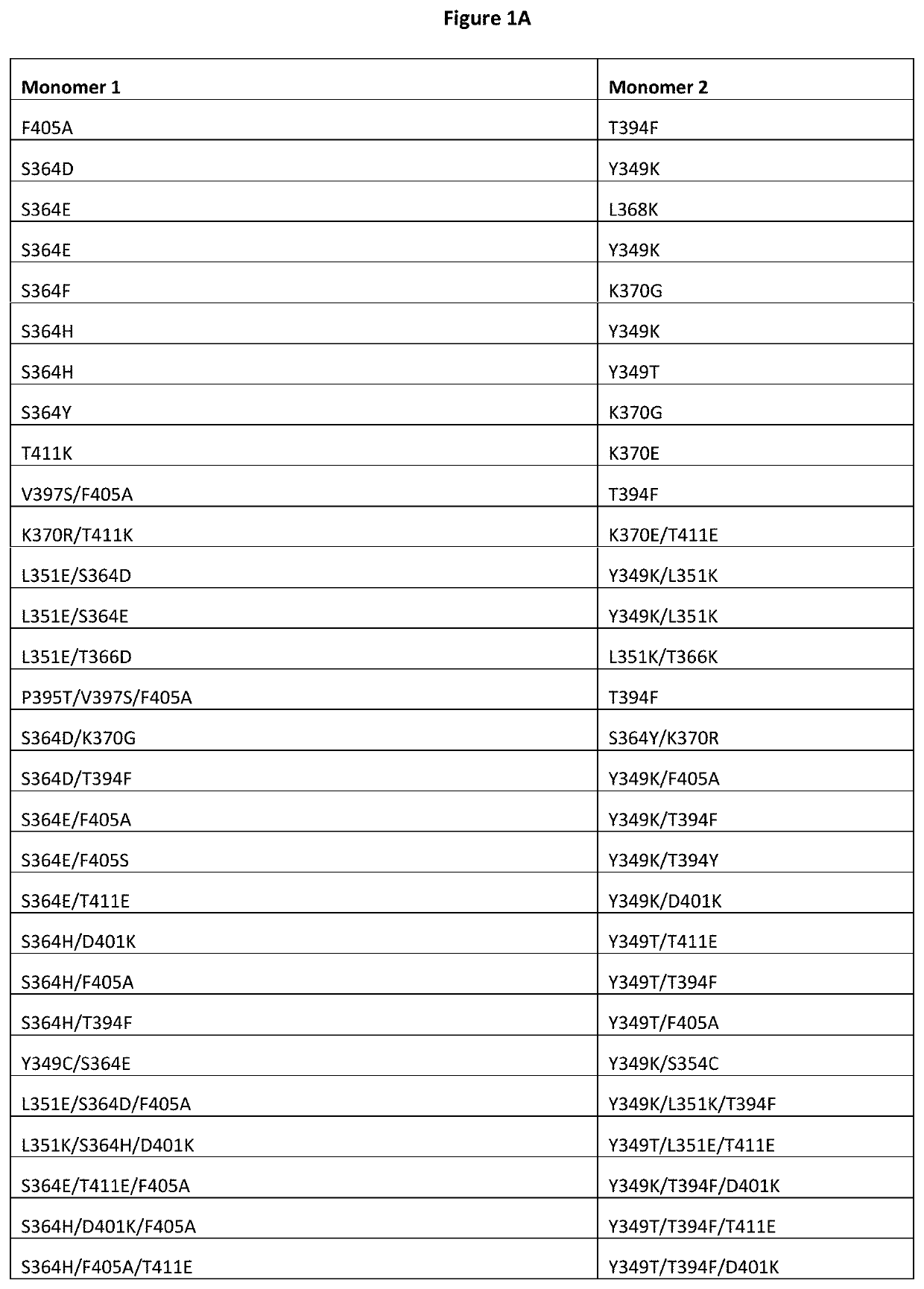Heterodimeric antibodies that bind prostate specific membrane antigen (PSMA) and cd3
a technology of prostate specific membrane and antigen, which is applied in the field of heterodimeric antibodies that bind prostate specific membrane antigen (psma) and cd3; it can solve the problems of inherent toxicity of the modality and achieve the effect of minimizing reactivity and advantageous cell selectivity
- Summary
- Abstract
- Description
- Claims
- Application Information
AI Technical Summary
Benefits of technology
Problems solved by technology
Method used
Image
Examples
example 1
g Biologically Relevant Surrogates for PSMA-Expressing Tumor Cells
[0372]To ensure cell lines with biologically valid PSMA antigen densities were used to inform the development of the novel anti-PSMA×anti-CD3 bispecific antibodies of the invention, IHC was conducted on paraffin embedded arrays of 160 biopsy cores of prostate cancer, 16 tumor adjacent cores, 16 normal prostate cores, and several cancer cell lines. Illustrative IHC of biopsy cores are depicted in FIG. 12, and samples were qualitatively scored in-house on a scale of 0-3 with 0 representing little to no PSMA expression and 3 representing high PSMA expression (herein referred to as IHC score; breakdown of score for each core is depicted in FIG. 13). Based on the results, it was determined that the novel bispecific antibodies of the invention should target cell lines having IHC scores of 3, 2, and 1 as they represent 97% of the patient segment and should not target score 0 cell lines as they resemble normal tissue. Upon ma...
example 2
inding Domains
[0374]2A: CD3 Binding Domains
[0375]Sequences for CD3 binding domains having different CD3 binding affinities are depicted in FIG. 10.
[0376]2B: PSMA Binding Domains
[0377]The variable regions of a mouse anti-human PSMA binding domain were humanized using string content optimization (see, e.g., U.S. Pat. No. 7,657,380, issued Feb. 2, 2010). Sequences for the humanized PSMA binding domain, hereon referred to as PSMA-H, are depicted in FIG. 17.
[0378]2B(a): Tuning PSMA-H Binding Affinity for PSMA
[0379]Variants of PSMA-H were engineered by introducing point substitutions into the variable light region (VL). In a first round, 75 variant VLs were engineered designated as L1.1-L1.75, sequences for which are depicted in FIG. 18. The variant VLs were paired with the wild-type humanized variable heavy region (VH) of PSMA-H and produced as bivalent mAbs (sequences for which are depicted in FIG. 19). Binding affinity of the variants for human PSMA was screened using Octet, a BioLayer...
example 3
c 1+1 Anti-PSMA×Anti-CD3 bsAbs Indiscriminately Kill Cell Lines Expressing Low Levels of PSMA
[0386]To benchmark the activity of the novel anti-PSMA×anti-CD3 bsAbs of the invention, the activity prototypic 1+1 anti-PSMA×anti-CD3 bsAbs XENP14484, XENP34282, and XENP34283 (sequences for which are respectively depicted in FIGS. 22 and 33) were first investigated in redirected T-cell cytotoxicity (RTCC) assays.
[0387]PC3 cell lines expressing various PSMA densities (as described in Example 1) were transduced to constitutively express luciferase. Luciferase released from dead cancer cells rapidly degrade in assay media, so live target cells can be quantified based on luminescence readout. The cancer cells were incubated with freshly enriched CD3+ T cells at an effector to target ratio of 1:1 for 24 hours. Next, the bispecific antibodies were added to the cells at the indicated concentrations. In a first experiment, 48 hours after addition of the bsAbs, Bio-Glo Luciferase reagent (Promega, ...
PUM
| Property | Measurement | Unit |
|---|---|---|
| molecular weight | aaaaa | aaaaa |
| molecular weight | aaaaa | aaaaa |
| pH | aaaaa | aaaaa |
Abstract
Description
Claims
Application Information
 Login to View More
Login to View More - R&D
- Intellectual Property
- Life Sciences
- Materials
- Tech Scout
- Unparalleled Data Quality
- Higher Quality Content
- 60% Fewer Hallucinations
Browse by: Latest US Patents, China's latest patents, Technical Efficacy Thesaurus, Application Domain, Technology Topic, Popular Technical Reports.
© 2025 PatSnap. All rights reserved.Legal|Privacy policy|Modern Slavery Act Transparency Statement|Sitemap|About US| Contact US: help@patsnap.com



